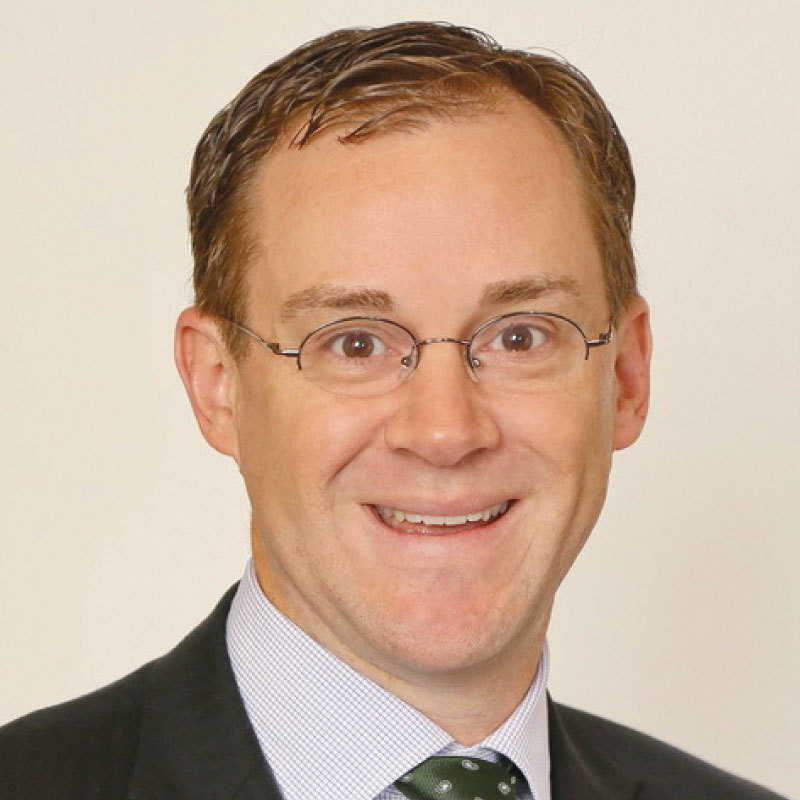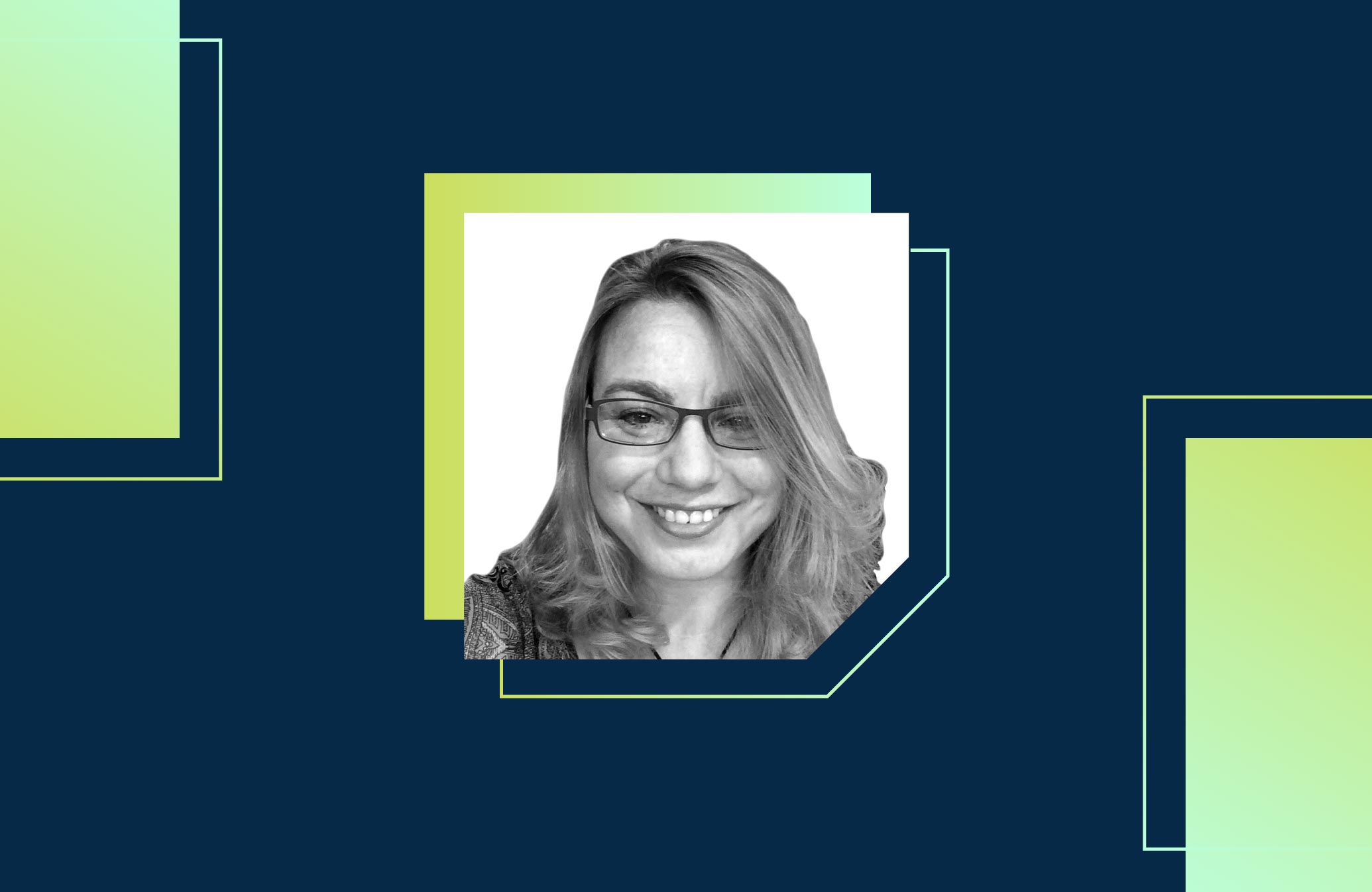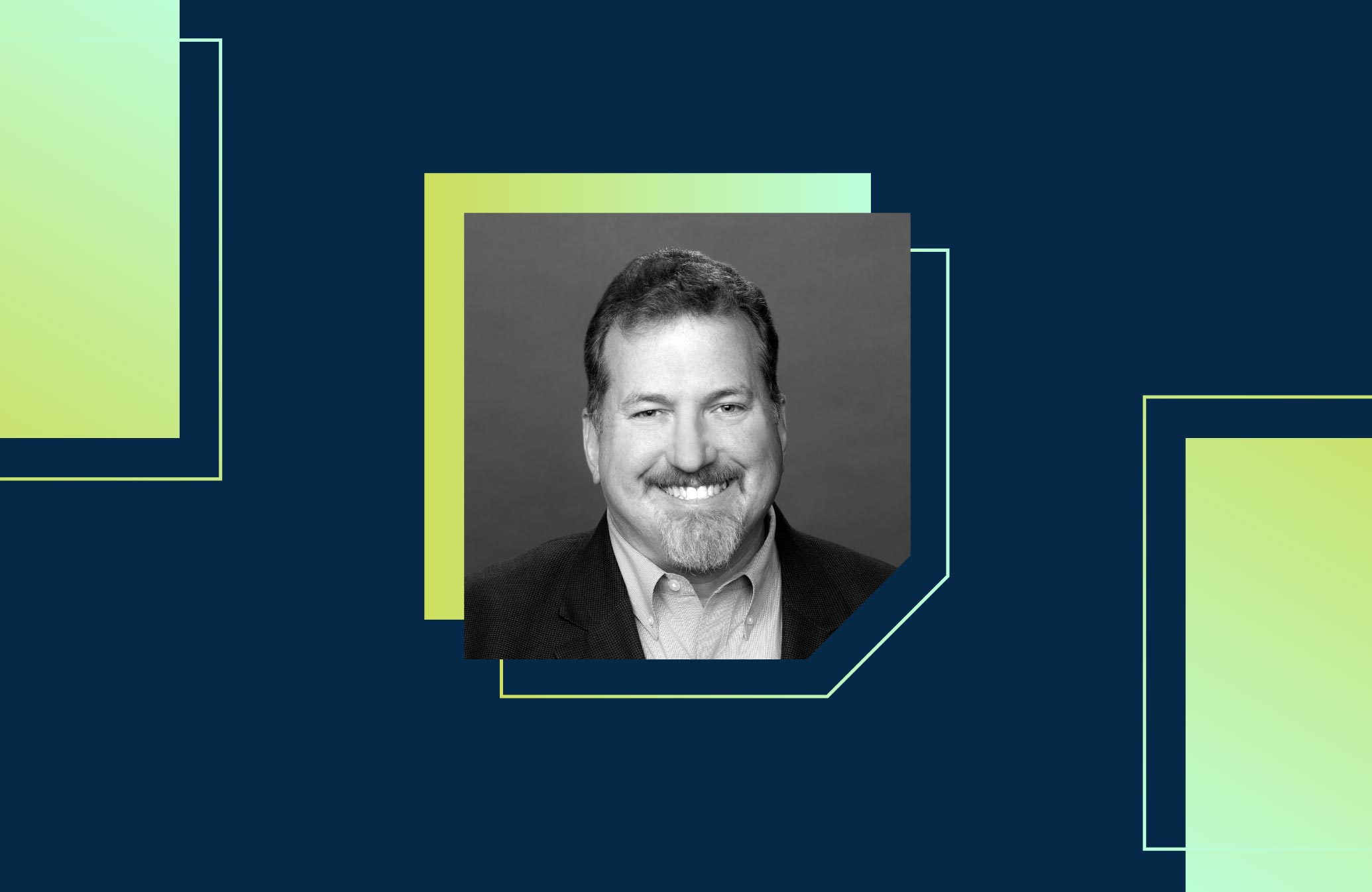Listen Now
Episode Transcript
Announcer: Health action innovators, leaders, and pioneers: You’re in the right place. RadioRev starts now.
Jenn Dellwo: Welcome back for episode four of RadioRev. I’m Jenn Dellwo. Thank you for joining us for season three. This series of episodes focuses on silver linings and new innovations in healthcare. We’ve experienced a lot of uncertainty and change over the last 15 months, catapulting the industry into a reality where creativity and bright spots have unexpectedly emerged as a result of the pandemic. So, this season really is about focusing on the bright spots—the innovations, the positive outcomes—and in this episode in particular, highlighting the member stories that don’t often get heard. Today, we’re joined by R.J. Briscione, Senior Director of Social Determinants of Health Strategy and Execution at CVS/Aetna. Welcome to the show. Thanks so much for being here.
R.J. Briscione: Thanks for having me. Glad to be here.
Jenn Dellwo: Why don’t we start by you telling us a little bit about yourself and how you ended up leading SDoH initiatives at CVS/Aetna?
R.J. Briscione: Thanks for the question. And this could actually take the whole podcast, but I’ll try not to do that. I originally was going to be a Marine Corps pilot, which is probably pretty far from leading social determinants at a large health company. But I worked for an airline for about 10 years and got laid off during that period and found my way to healthcare via politics. Actually, I was really, really involved in politics from a policy standpoint working for the Speaker of the House here in Georgia on some campaigns and started working in healthcare as a lobbyist. But I really moved into the business side of it probably about eight or nine years ago. And it’s all been in Medicaid for the most part, although I spent some time working on the dual eligibles, the Medicare-Medicaid eligibles. And so through that work, what we now call social determinants has really evolved from the work that we’ve always done with Medicaid plans and in how we want to engage our members. And really, as we started thinking more and more about how we were going to address social determinants by name about two or three years ago, I really just kind of dove straight in. And this opportunity, although it’s taken a couple of different places here at CVS/Aetna, presented itself to me to become part of a team and then be the lead for our work in this realm. I was just super excited. I dove in from my previous work in Medicaid business development, figuring out how we could do partnerships on the ground where it really matters to Medicaid members, engaging places like food banks, which I think we’ll talk about later, and other entities and really trying to make a difference for our members. So, I’ve condensed a lot of crazy career stuff down to that. But it’s really something that I’m just so pleased to be able to be a part of and something that I’m passionate about where I think we can make really big differences.
Jenn Dellwo: And I’ve heard you talk about the work that you do at CVS/Aetna before, and by the very nature of your role working on SDoH initiatives at a large health plan, I imagine you’ve seen a number of bright spots emerge over the last 15 months. In fact, through a five-minute conversation that we had before recording this episode, you highlighted three really interesting topics that could take up full episodes on their own. Could you briefly describe those?
R.J. Briscione: The first thing: When I first got into this work full scale just a little bit before the pandemic…if you really think about it, in August of 2019, one of the things that we realized is that if we want to get members or patients or however we’re going to think about the folks who we want to get to fill their social needs, we really need to be able to identify them, understand who they are, and what’s going on with their lives. And so we were just beginning to scratch the surface on how to do that. But the company as a whole, and really the industry, has taken off on data, on social determinants, so that we can come up with a profile for the member that helps us identify their very specific social needs. I’m really super excited about that work and how that work informs all the rest of our work. This is what I call getting the “right” members aware of what we have out there for them. I think one of the hardest things to do in addressing this population, chiefly Medicaid and also Medicare, and also really anybody who could use some help with access to some of these services, is making them aware that their health plan has this available for them. A lot of times we have a lot of things out there that are just hard for the member to find and hard for us to get right in front of the member who needs it. So, the database piece will give us a very individualized look at the member, and then we’ll know the best way and how and when and where to reach to them. So, super excited about that. And then a second piece that that I don’t lead—we have amazing person, Kelly Savage, who leads our work on this—but that our social determinants work informs and that we’ve done a much better job of taking a holistic look at—is our housing investments. So, when you think about social determinants, most people usually think…or when I explain what I do for a living, I usually say food and housing and people get it. And so if you think about Maslow, and if you don’t have secure, stable, and affordable housing, you’re probably having trouble with not only all the other social needs, but you’re going to have some health issues as well that occur from that. So CVS has done an amazing job of making fairly large-scale investments in affordable housing. And then we’re really beginning to take it the extra mile and make sure that we holistically address those members. So, for example, I was at a housing opening, an affordable housing opening just south of Atlanta, where I live, about a month ago. And first of all, these communities are incredible. They have amazing amenities. They look and feel completely different than I think what most people would think of as affordable housing. It’s a very, very impressive, very dignified place where people really want to live. And some of the focus is on putting them in places where they’re most needed so that people can commute easily to their jobs, so that they can raise their families in places that are attractive to them with good schools and all of those kinds of things. But then how do we as CVS wrap what we have available around to those members? So there’s things like our project health, which is actually sometimes store based. But if you think about the pandemic, it has led us to bring that to be mobile based. So, think of a large bus that comes in, does health screenings and engages the members, lets them know their numbers as far as conditions, and then what they can do about that. And then we’re in talks with some of those larger builders, developers of housing, who are very interested in also wrapping more for that member. So, what more can we do for them? Excited about that. Finally, and I think what we’re probably going to do a little bit deeper dive on this, is our work with Feeding South Florida, which, as some may know or may guess, is a part of Feeding America, the largest network of food banks in the country, and some of the work we’ve done with them for that community so far. But we want to learn from that—what we can do for our members as we test out some new theories on addressing food security.
Jenn Dellwo: OK, so I have so many questions that I want to ask you about the data piece and the housing investments. But I’m going to restrain myself and stay focused. We are going to focus on Feeding South Florida. So, can you tell us what that looks like? What are some of the goals and challenges of the program?
R.J. Briscione: Sure. So goals, first of all, I think we’ll be able to talk about this naturally. But the first thing we did with them, which is complete, is we supplemented just the fantastic work that Feeding South Florida has always done. Well, maybe not always, but has done recently and continues to do, and that is bring on a new school to what they call their School Pantry Program. So not entirely rocket science, but what we did with this was had a third-party study it so that we could…we had some theories about what addressing food security could do for students in an elementary school, and this is really informed by some really smart folks that we talked to along the way. We took our time designing this to say, if you think about a true social determinant, a true social determinant for really all of society—and I spoke to former Medicaid directors about this—is high school graduation rate. And then if you go further up the line, further upstream, high school graduation rate is most affected by—and there’s research on this—students’ ability to progress in the elementary grades. Right. So, we said, “Let’s bring this to an elementary school and see how food security improves their behavior, their attendance.” We didn’t focus perfectly on attendance and their nutritional outcomes. So, does it improve their nutritional status, the household food security? And does it reduce overall household budget shortfall? And so the way that we did that was very specific in that we want to say how much it impacts families and their level of food insecurity. So, the program was really designed to wrap around the needs of the families and find out if the students and families are better off. The way that that’s done, and specifically the way we did this, was fresh food, so really good fresh fruit and produce twice a month, every other week. And then the pantry program comes in because there’s an actual pantry where they can come and get shelf-stable foods any time they need it to supplement those needs. This was pretty much a low-income area in Miami, near downtown Miami, very near the airport there. Those were the goals. Plenty of challenges in delivering that, but really, really some exciting results that I think we can get into.
Jenn Dellwo: So, when you and I were initially speaking about different silver linings that you’re seeing and what we could talk about during this conversation, you called Feeding South Florida a double silver lining. What did you mean by that?
R.J. Briscione: Two things. That school pantry program was initially designed to be a phase one. And we were going to roll right into a phase two, which I can talk about later. And then obviously, maybe not obviously, but COVID delayed that. It was difficult for food banks. If you think back—it’s been a year now—but I think the most distinct image for me, having worked with the very people who are doing this work in this space for a couple of years now, was these lines at food banks. And if you watched the national news, maybe not this time last year, but almost right away, April, May last year, people were lined up, especially for Feeding South Florida. In South Florida they were very hard hit. They were in the national news for literally mile-long lines of cars, but they met those needs. But what that meant was they really had to scuttle some of these programs and focus on mass distribution for a while, like those big lines and getting as much food to as many people as they possibly could in a mass way, and maybe we didn’t have the rigor around that. And then obviously schools were closed. So, they weren’t doing school pantry programs, which is heartbreaking. But I think being able to take all of that into account. So, silver lining number one is being able to now address what the pandemic brought and rethink how we’re going to serve not only the community that we were originally planning on serving, but in a way that makes sense post pandemic. And then really time to take the true, logical next step from the results that we have from the School Pantry Program, which we have a great report on and refine what we want to learn from it from a health measures perspective and how we want to study what happens to the folks that we were able to bring this to. So, I think in that way, we’re gaining from what’s happened from the pandemic and able to address this in a much, much better way than we probably would have before that.
Jenn Dellwo: So, thinking about the members in this program, I’m curious what their response has been. Do you have any member stories that stand out that you can share?
R.J. Briscione: Yeah, there are some great…the study did a great job of both some surveys and data and then also the member…well, because they weren’t our members, I don’t want to say members, but the folks that participated in this, the families—focus groups. The first thing off the bat that I’ll say is something that is gaining some traction but doesn’t have enough traction yet, I think is the cultural awareness and cultural sensitivity. And I’m proud to say we did plan for that ahead of time. We offered focus groups in both English and Spanish. We ended up only having Spanish speakers in the focus groups. So, that should tell you something there as well. The parents—and I spent a good amount of time at the school as we were doing these distributions— but the parents were much more comfortable in Spanish. I think that’s one. At the beginning…one out of three respondents indicated monthly household food insecurity. And for those that aren’t super familiar with that definition, that means at least once a month or every other month, and we explain this in the question, make sure we get the right data back to the household, did not eat for a whole day because there wasn’t enough money for food. And so when asked if they’d eaten less because there wasn’t enough money for food, 35% of them stated that they had and 16% shared that their households were hungry because there wasn’t enough money for food. And then also, respondents were also asked if the program allowed them to meet food needs for the month, and 51% answered, “Yes.” Obviously, we’d like that number to be higher, but 74% said that it increased their ability to eat nutritiously, which is fantastic. A couple other things that really stick out, there’s tons, but one of the questions is “Your child’s overall health is:” and the choices are: has been excellent, very good, or fair or poor. So, the “excellent” went from 38% pre to 50% post, and then the “fair or poor” went from 10% pre down to 3% post, which is really one of the things I’m most encouraged by. One of the other things that I noticed in there as I was reviewing for this—as we’re discussing different things jump out at me every time—was although the school does have a breakfast program that eats breakfast at home, there’s a question, “Do your kids eat breakfast at home?” It was up significantly, which means that they felt comfortable enough feeding their students at home and breakfast at home, which there are lots of studies on how important that is. Two favorite things: The most favorite thing actually came from the focus groups and some anecdotes. One of the parents had two daughters, both of whom were prediabetic, and by taking advantage of the program, said that they’re no longer prediabetic. I’ve sent that around as…sometimes we all get lost in our work. But when you just think about what a difference that makes for that family. Another respondent said, we now buy more fresh products such as vegetables that we didn’t buy before because we didn’t know about them or hadn’t tried them. Part of the program was education around how to use some of these foods. We’re potentially introducing some newer, fresher foods. The person also said, “We’re learning how to buy healthier and more nutritious food.”
Jenn Dellwo: That’s so fantastic to hear it’s not just impacting in the moment, it’s impacting the future of how they’re interacting with food and how they’re determining what they’ll eat moving forward. I think that’s so amazing. Once the program launched and you saw how people were responding to it, was there anything in particular that was really eye opening that you weren’t expecting that impacted the future direction of the program?
R.J. Briscione: Yeah, for sure. And the funny thing is this, if you’ve read the report, this doesn’t stand out so much in the report, and this is the importance, I think, of being there in person and seeing it, is that food delivery and social determinants in general, if there’s one thing I can say about my work in general, is that it has to be delivered ultra locally. A great example is when we think about this program. If folks can imagine, an elementary school is pretty local. In a densely populated urban area, that’s a large neighborhood, let’s say. But we went very deep dive into the data on all of the people around this. And there’s some very eye-opening statistics about transportation and access to transportation, which is a significant social determinant that obviously needs more work. And so most of these households either had one or zero cars. And many of these households—and I know this from being around in the neighborhood—during the summer when we continue the distributions, it wasn’t always at the school. It was at one point in another part of the neighborhood. These households have multiple generations living in them. They’re small, cramped quarters. And they may have one or two vehicles between those multiple generations of folks that are trying to work. And so the person who is most likely to participate in this is either the mother or grandmother that’s making sure that the children get to school and then going in for the program as we do the distributions. They were almost all always walking. And that is a long walk in the Miami heat and humidity. And also, we’re distributing a lot of food. We’re distributing two weeks’ worth of food and produce and large melons and stuff. That’s difficult to transport if you’re on foot, and especially, if you’re the grandmother. There’s a lot of grandparents taking care of the kids. So, we really…to talk about this next phase, but we wanted to get much more local to be able to deliver that better and to not have that be an obstacle.
Jenn Dellwo: So looking ahead, what’s next for the program?
R.J. Briscione: We put our heads together with Feeding South Florida. Something that they had wanted to do and were working on grants for otherwise that we were able to supplement is something called the mini Mobile FARMacy, with pharmacy spelled as ‘farmacy.’ It’s an air conditioned grocery store on wheels. And so our work, our sponsorship of this, gives us basically a year’s worth of picking ultra-local places for the Mobile FARMacy to go. This is what’s coming next. We’re actually in the active designing phase of this. But just to think about it, customers—and phrasing and words are important—so customers can select from donated items free of charge or purchase other food items at a reduced price using either their SNAP or debit cards or cash. And the FARMacy itself will visit a different low income, low access community every day in South Florida. Feeding South Florida is getting that around daily. We are picking—I can’t remember the number, it’s a very significant number of spots where we are going to choose for it to be mainly at some health clinics and medical facilities that will enable us to gather the medical data on the members and understand how this affects both their social and medical conditions. In addition to the fixed schedule on which they can think about it for their weekly shopping needs so that it’s repeatable—which is what we’re going for—it can also get to community events, health fairs, and things like that. Some of the social and environmental determinants that we think about that really limit access to fresh and nutritious food items are great. If you think about that example that I gave, there’s probably people in that community that didn’t come because they knew that they couldn’t walk directly to that elementary school every day. So, trying to get much more local on that and then really address the lack of information or skills to know about the nutrition available. Feeding South Florida’s goal is really to address the chronic poverty in an environment where government programs don’t quite stabilize those families. If you look at what’s going on in South Florida, there’s a strong economy. But there’s also a very strong divide in wage growth at the lower level. And so we really want to program this to meet the clients where they are, give them some consistent, reliable access to those items that they need and make the most of their purchasing power and then supplement it where they feel short. And then really—I talked about this earlier in the housing—but provide that in a dignified manner and environment. Something we saw in the pandemic—having people stand in long lines, is really, really unacceptable. Also I would say so is passing out food without giving people a choice of what they’ll receive. We don’t want to just feed people. CVS’ mission is to put people on the path to better health. And this is a fantastic way to do this. That’ll be out there every day. On the days, which again, are significant, I would say the majority…I don’t have the numbers right in front of me…of where we’re guiding where this is going to be, we’re going to do some very close studies of the folks who take advantage of this and their specific health markers and conditions and monitor that over the year.
Jenn Dellwo: Well, this is a very cool program, and I look forward to hearing how it goes. Maybe you can come back for a part two to tell us about the results of that program.
R.J. Briscione: I’d love to.
Jenn Dellwo: Well, transitioning out of the Feeding South Florida topic, I’m curious, with the year that we’ve just had and after all of the change and uncertainty, what’s something that makes you feel optimistic?
R.J. Briscione: There are several things. Well, first of all, obviously, being able to do things like this. And addressing some of the needs that were brought bare by the pandemic, first of all. But secondly, I would say, almost on a very different topic, the explosion of technology and technology reaching healthcare consumers, it still has a long way to go to reach those that are in most need of it. I think the recognition of that in the last year and the focus on innovation… I’ve started talking to, or I’ve had a lot of interest from some startups, but other well-established companies that really want to focus on reaching those in Medicaid or uninsured and underinsured and really thinking about how, I’ll put “innovation” in quotes, because some of this doesn’t require much innovation. Some of it just requires a real focus on these members and getting that to them. I’m optimistic that that is a change that will continue.
Jenn Dellwo: OK, my last question, what’s something positive that’s come out of COVID-19, either for you personally or for the healthcare industry, that should never go back to the way that it was before?
R.J. Briscione: Mostly my answer for healthcare would be similar to that answer. But broader than my previous answer is that I think everybody understands what social determinants and health equity means. We here at CVS/Aetna think about social determinants as a piece of health equity. And I think for a lot of people who maybe just hadn’t focused on this previously, it reached the general population of what health equity means. Something that I didn’t even bring up yet today, but I spent a lot of time on at the beginning of this year as the vaccines rolled out, the incredible work that we at CVS did to make the vaccines equitably accessible, which is not easy work. Getting those vaccines very much to the Black and Brown communities and allowing the leaders in those communities to engage the folks that may have been hesitant to reach their decisions in their own way, in their own time, without us being the factor on that. I think the whole engagement of all these groups that we, and Medicaid, that are close to the communities, that very closeness of how to engage these folks and the need for a better focus on health equity and social determinants is really something that I don’t think is going to go away. To sum it up, access is everything, whether that’s access to food or housing or traditional healthcare, and being able to reach that by any means. But I think the importance of that is showing up in a big way.
Jenn Dellwo: That’s a great way to sum everything up. R.J., thanks so much. If people would like to connect with you, what’s the best way for them to get in touch?
R.J. Briscione: No problem at all. I’d love to connect with folks that are interested in this. LinkedIn’s probably super easy. I’m definitely the only R.J. Briscione on there. Feel free to slide into my DMs there, and that’s probably the best way.
Jenn Dellwo: All right. Sounds great. Well thank you so much for your time.
R.J. Briscione: Thank you. I really enjoyed this.
Announcer: Thanks for joining us for RadioRev. Make sure to subscribe and catch our next episode.
Inside the Episode
In Episode 4, R.J. Briscione, Senior Director of Social Determinants of Health Strategy & Execution at CVS | Aetna joins RadioRev to discuss food insecurity and health equity—specifically in his work with Feeding South Florida throughout the pandemic. He answers questions like:
- How did you find a double silver lining amid the pandemic?
- What are some of the goals and challenges for Feeding South Florida?
- What are some member stories, and how are they used for initiatives both now and in the future?
Plus, a conversation about what’s to come and what he thinks should never go back to the way it was before as we emerge from the pandemic.
To connect with R.J. and keep the conversation going, connect with him on LinkedIn.
“Some of this work doesn’t even require innovation, it requires a focus on the members and getting them what they need.”

R.J. Briscione
Senior Director of Social Determinants of Health Strategy & Execution at CVS | Aetna
Can’t get enough of RadioRev?
Check out all of our episodes to stay up-to-date on the latest in healthcare innovation, social determinants, and health action.




